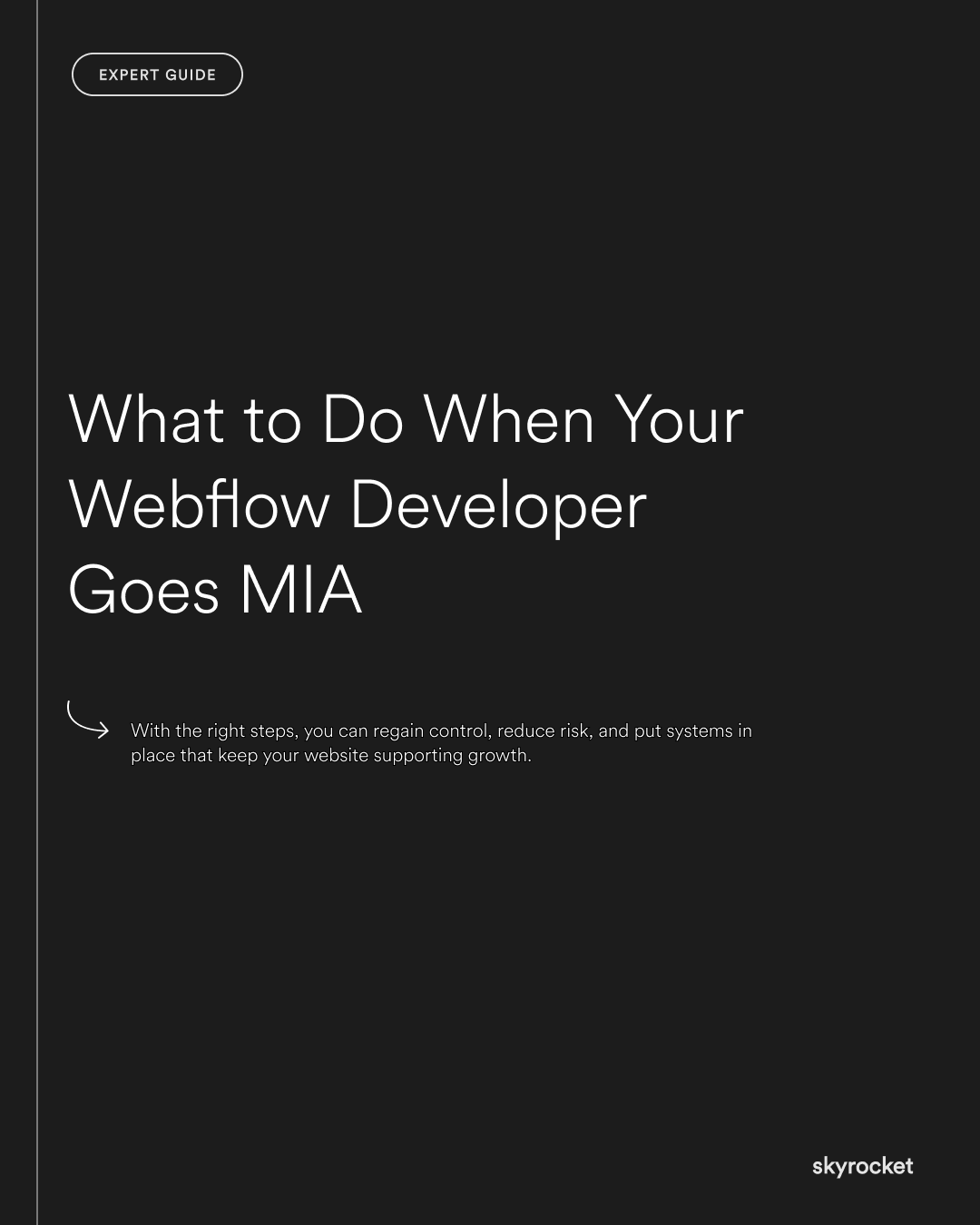It’s a scenario more common than most business owners expect. You hire a Webflow developer, the site launches, things tick along for a while, and then suddenly your messages go unanswered. Deadlines are missed. Updates stall. Your business is left stuck with a website you can’t confidently manage.
A missing developer isn’t just an inconvenience. It can hold back marketing campaigns, stall product launches, and create a sense of uncertainty that filters through to your team and customers.
Why this matters in business terms
Your website isn’t a side project. It’s where sales happen, where leads arrive, and where your credibility is judged daily. When your Webflow developer goes missing:
- You lose control over updates that affect revenue.
- Security risks build up with outdated software or forgotten access.
- Marketing efficiency drops because your team can’t make changes fast enough.
In short, the absence of a developer becomes a business risk, not just a tech hiccup.
Key Tip: Your developer should never be a single point of failure. It might feel normal to rely on one trusted person, but the healthiest businesses build systems where knowledge and access are shared. If your website grinds to a halt because one freelancer disappeared, the risk was built in long before they went quiet.
Practical guide: Steps to take when your Webflow developer disappears
1. Secure access immediately
Check who controls the Webflow account, hosting, domains, and any connected tools. If your developer used their own account, you may need to request transfers through Webflow or the registrar.
2. Audit what you have
List what’s working, what’s broken, and what updates are urgent. This helps you separate true emergencies from nice-to-have improvements.
3. Stabilise critical functions
Focus on checkout, forms, and lead capture first. If those stop working, you lose sales. Make sure they are tested and functional.
4. Find interim support
Even if you’re not ready for a long-term partner, look for reliable short-term Webflow help to cover urgent needs.
5. Plan for the future
Once you’ve stabilised, consider whether you want ongoing support from a team rather than a single freelancer. This reduces risk and ensures you always have cover.
Real-world example
A NZ business owner launched a Webflow site with a freelancer who later disappeared. The business urgently needed to update pricing but had no access to the CMS. With help, they regained control of the account, set up proper admin access, and put a lightweight support plan in place. Within weeks, marketing campaigns were back on track and the risk of being locked out again was gone.
Common misconceptions
“Can’t we just wait and see if they come back?”
You could, but every week you wait is a week your business is exposed. Act quickly to secure access before more issues arise.
“We’ll just hire another freelancer.”
That can work short term, but without proper processes, you risk repeating the same problem. A system that relies on one person will always be fragile.
“We don’t need ongoing support once it’s fixed.”
Websites evolve constantly. Treating it as set-and-forget often leads to bigger, costlier problems down the line.
What to do now
- Confirm who holds admin access to Webflow, hosting, and domain accounts.
- Test key site functions like checkout, forms, and logins.
- Document current issues and priorities in one place.
- Engage reliable interim help to cover urgent fixes.
- Put a longer-term support plan in place so you’re never stuck again.
Your business shouldn’t grind to a halt just because one person goes missing. With the right steps, you can regain control, reduce risk, and put systems in place that keep your website supporting growth. If you’d like an expert perspective on securing your Webflow site, we’re always here to chat.



